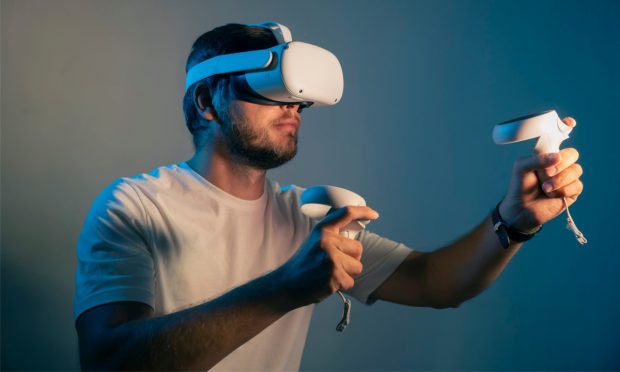Slow 5G Uptake Could Be Achilles Heel of Metaverse’s Retail Rollout

Any Big Tech company can also be a retailer.
At least Meta, formerly known as Facebook, might hope so.
OK, the idea that Meta is actively seeking to become a full-fledged brick-and-mortar player, a la Apple, may be a bit far-fetched. After all, the company’s initial retail bid thus far is limited to one outpost — specifically, one located on its California corporate campus.
As reported Monday (April 25), the retail store will be focused on hardware and promoting the metaverse. Beginning May 9, when the store is slated to open, visitors will be able to try out Quest virtual reality headsets among other offerings, such as the Ray-Ban Stories “smart” eyewear.
Per a Monday statement from the company, the Meta Store also features an interactive Quest 2 display wall, allowing consumers to “explore the hardware, its accessories, and the breadth of content available today.”
As part of that same statement, Martin Gilliard, head of Meta Store, said that “the Meta Store is going to help people make that connection to how our products can be the gateway to the metaverse in the future. We’re not selling the metaverse in our store, but hopefully people will come in and walk out knowing a little bit more about how our products will help connect them to it.”
Limited Retail Space
But then again, we note, as to that mention of selling — the physical setting is being billed as a “retail space” so that would imply … selling. Apple’s experience is not applicable here, we think, because its ecosystems had been so fully cemented before Apple stores began opening.
In the meantime, the puzzle pieces of the Meta metaverse economic model are falling into place, bit by bit. As reported earlier in the month, the company said that it is debuting a payments tool tied to the Horizon Worlds platform.
Once creators have paid the platform and sales fees, when all is said and done, the fees could run to nearly 50%. Gaming right now is the low-hanging fruit, but the hope is that there will be a blossoming of new, virtual experiences.
See also: Meta Opens Its Metaverse Platform to Payments, and It Doesn’t Come Cheap
The issue as to whether this initial toehold in brick-and-mortar commerce takes root or fades lies with a critical tipping point — one that has wider implications for the metaverse, too.
Simply put, the metaverse launch — the push by various telecom giants and tech firms to get 5G phones into the hands of consumers — may face some strong headwinds. As PYMNTS data have shown, a majority of consumers are pulling back on their spending, focusing on the essentials.
While the individuals that are splurging on higher end items like electronics tend to be younger, they make up 10% of the population (we’ve defined them as the consumers who “live large”).
Related: NEW DATA: 6 in 10 Consumers Buying Only the Essentials as Inflation Rises
Thus, the majority of the population may be less inclined to upgrade and wield the 5G phones (and phone plans) that underpin the shift to 5G.
The consumer adoption is imperative against the backdrop where Verizon also announced earlier this year that it will collaborate with Meta on metaverse use cases and infrastructure (including Meta Connectivity, or MEC). However, there are some troubling signs amid the telcos, as Verizon said in its most recent quarter that it lost subscribers and wireless growth remains challenged.
The move into hardware, into metaverse worlds beyond games — and indeed, even into a brick-and-mortar setting — shows that Meta is moving ever farther afield from content. Right into the teeth of economic cross-currents that the company has never experienced.
